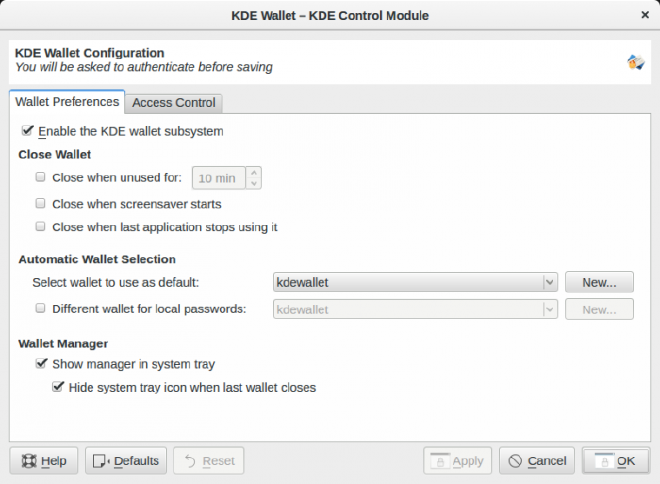Enabling kwallet after accidentally disabling it

Table of Contents
Although I use GNOME 3 as my desktop environment, I prefer KDE’s kwallet service to gnome-keyring for some functions. The user interface is a little easier to use and it’s easier to link up to the keyring module in Python.
Accidentally disabling kwallet #
A few errant mouse clicks caused me to accidentally disable the kwalletd service earlier today and I was struggling to get it running again. The daemon is usually started by dbus and I wasn’t entirely sure how to start it properly.
If I start kwalletmanager, I see the kwallet icon in the top bar. However, it’s unresponsive to clicks. Starting kwalletmanager on the command line leads to lots of errors in the console:
kwalletmanager(20406)/kdeui (Wallet): The kwalletd service has been disabled
kwalletmanager(20406)/kdeui (Wallet): The kwalletd service has been disabled
kwalletmanager(20406)/kdeui (Wallet): The kwalletd service has been disabled
Manually running kwalletd in the console wasn’t successful either.
Using kcmshell #
KDE provides a utility called kcmshell that allows you to start a configuration panel without running the entire KDE environment. If you disable kwallet accidentally like I did, this will bring up the configuration panel and allow you to re-enable it:
kcmshell4 kwalletconfig
You should see kwallet’s configuration panel appear:

Click on Enable the KDE wallet subsystem and then click OK. Once the window closes, start kwalletmanager and you should be able to access your secrets in kwallet again.